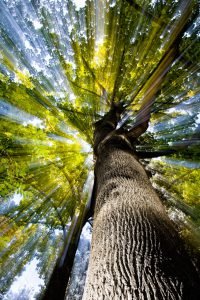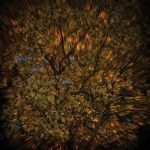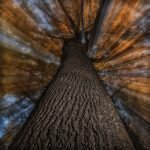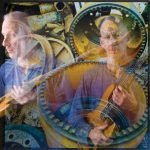+ By Leigh Glenn + Photos by Larry Melton
For an instrument born into the viol family in the late 1400s, the bass has come a long way. It shot up in size as an upright and shrunk as an electric. Whether musicians use a bow, or strum, pluck, or slap its strings, the bass is a crucial part of the soundscape. Music without bass is like soup without salt—lacking in wholeness. The idea that bass is merely in the background belies its importance.
 Larry Melton knows this because the bass is his instrument. At age 13, after piano and trumpet, he veered toward electric bass to complement two friends—a drummer and a guitarist. “I thought, ‘I’ll try bass, and we can start a band.’ I was slacking on the trumpet, and the bass seemed a lot hipper, so I made the switch.”
Larry Melton knows this because the bass is his instrument. At age 13, after piano and trumpet, he veered toward electric bass to complement two friends—a drummer and a guitarist. “I thought, ‘I’ll try bass, and we can start a band.’ I was slacking on the trumpet, and the bass seemed a lot hipper, so I made the switch.”
He didn’t look back. “You have the ability to change the harmony of the song, the groove of the song,” he says. “It’s a supportive instrument, and you’re part of a team. But if you think about all the great pop tunes, usually they have a catchy bass line—and that drives the tune. It makes everything above it sound better.”
Growing up in Bowie, Maryland, Melton was exposed to all kinds of music, thanks to his parents, Edward and Elizabeth, and older sisters Vicki and Kathy, who filled the house with everything from classical and Broadway to pop and Motown, The Beatles, Jethro Tull, and Yes. Edward Melton, a World War II veteran who served in Newfoundland and Burma, often broke into song.
His father also gave Melton his first camera, and today Melton photographs professionally. Edward Melton liked to use his medium-format camera to capture the family, whether it was a special occasion, someone catching a fish, or a family portrait. “They were really crisp black and whites,” says Melton. “They still look great.”
Music and photography—plus a years-ago stint at Paul Reed Smith’s shop making guitars—have been Melton’s mainstays. Though if he were forced to choose between them, he’d pick the bass. “I consider myself a musician first,” he says. He knew that by age 15. “A lot of close friendships were established in high school. I’m still friends with them, and we still play music together.”
In 1980, he met the Cassidy siblings, violinist Dan and the late singer/guitarist Eva. They played songs by Yes, Jethro Tull, Heart, Kansas, and Crosby, Stills & Nash, as well as originals. “It was so challenging to play the music we were playing,” he recalls. They rehearsed so much—three or four nights a week—that Melton’s grades suffered and he barely graduated from high school.
 Melton studied with Annapolis guitarist Rob Izzi, who taught him Jimi Hendrix and Jeff Beck tunes. “All kinds of cool bass lines,” he says. Included among his many influences are bassists Chris Squire, Jaco Pastorius, Paul Chambers, Charles Mingus, Ron Carter, and Dave Holland, and other musicians such as Stevie Wonder, Charlie Parker, John Coltrane, and Miles Davis. He enjoys anything with a good bass line.
Melton studied with Annapolis guitarist Rob Izzi, who taught him Jimi Hendrix and Jeff Beck tunes. “All kinds of cool bass lines,” he says. Included among his many influences are bassists Chris Squire, Jaco Pastorius, Paul Chambers, Charles Mingus, Ron Carter, and Dave Holland, and other musicians such as Stevie Wonder, Charlie Parker, John Coltrane, and Miles Davis. He enjoys anything with a good bass line.
After high school, Melton moved to California to study at Musicians Institute. In 1985, he returned to Maryland and began playing, teaching, and making guitars. He went back to Los Angeles and worked in a few bands, playing rockabilly and covers, but after a trial period, he came home.
Melton’s shift into creative photography coincided with his time backpacking out west and focusing on nature. By 1991, he was studying with photographer Dick Bond at Maryland Hall for the Creative Arts. What started out as a teacher-student relationship evolved into mentor-mentee, then friendship as Melton began assisting Bond on commercial assignments involving the use of studio techniques to create the perfect light to showcase the artwork of others, including painters, sculptors, and other photographers.
Melton’s love of land and earthly-cosmic phenomena comes through in his nature photography, including his photographs of the Northern Lights. “When you’re traveling, it’s just made for photography—everything you see is new, it kind of heightens your awareness. A lot of these pictures aren’t worthy of hanging on a wall, but they’re memories.”
Melton also likes to experiment with light. He used a strobe outdoors to create abstract images, such as those in his Blur series.
Through Eva Cassidy, Melton came closest to blending the two media. He played bass on “Wade in the Water” and “Time Is a Healer” from her Songbird album, which was certified as platinum in 2008. And, in the summer 1996 after Cassidy played Blues Alley and while her name was still on the marquee, Melton photographed her outside of the Washington, DC, jazz club. Those iconic photographs appear on her Live at Blues Alley CD.
 Melton is still good friends with Dan Cassidy, who resides in Iceland, and they have played gigs in England. He also stays in touch with the Cassidy parents, Hugh and Barbara. Hugh, a cellist, gifted Melton his old Fender bass on Melton’s thirtieth birthday.
Melton is still good friends with Dan Cassidy, who resides in Iceland, and they have played gigs in England. He also stays in touch with the Cassidy parents, Hugh and Barbara. Hugh, a cellist, gifted Melton his old Fender bass on Melton’s thirtieth birthday.
Locally, Melton often plays with Dan Haas and the Jarflys, and enjoys opportunities to play with bluesman Dean Rosenthal. He’s also worked with Permanent Vacation, a jazz-fusion band for which he has penned some compositions, Meg Murray, The Geckos, Van Meter, Joe Karr—who’s helped Melton enhance his photo-editing skills—Lance Taylor, and Angie Miller.
Melton’s newest gig is serving as an Airbnb host with his art- and light-filled home. But he’s most in his element when working with sight and sound. “Music and photography pull you into the present,” he says. “If you’re really engaged playing music or taking pictures, there’s nowhere else to be.” █





